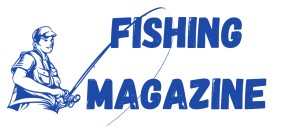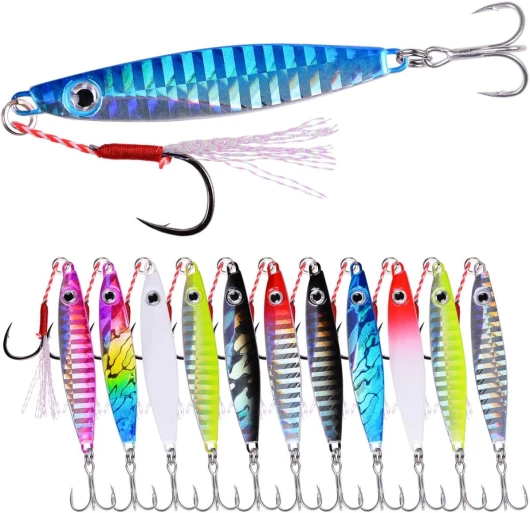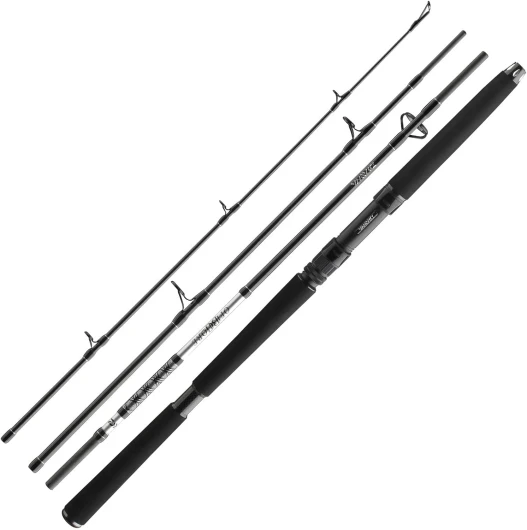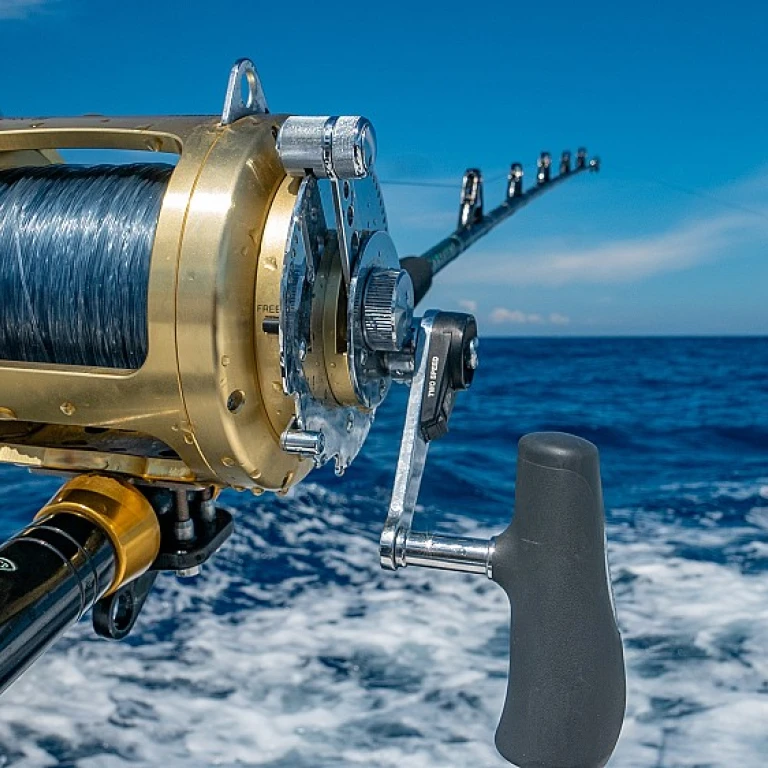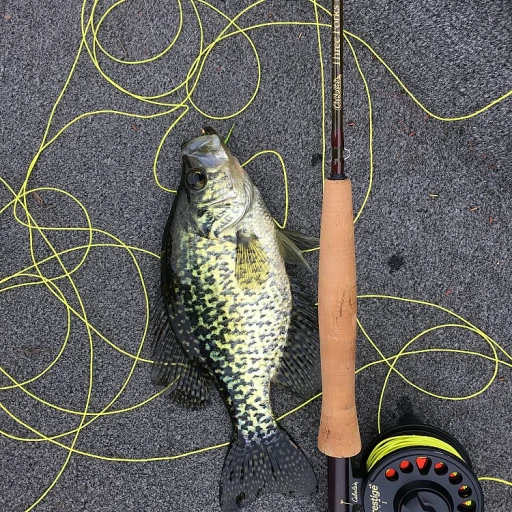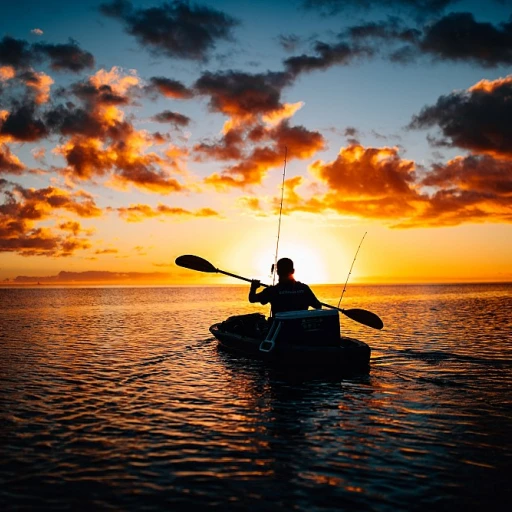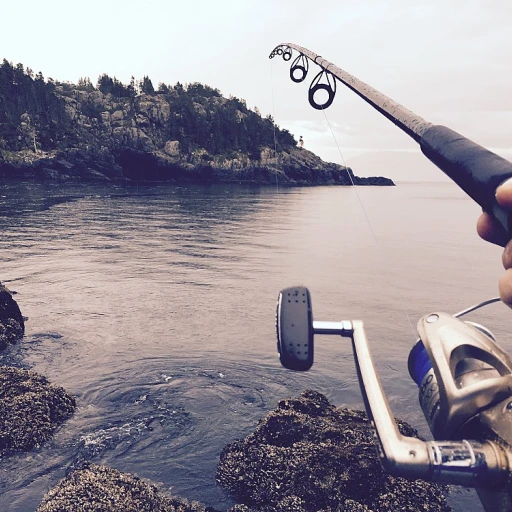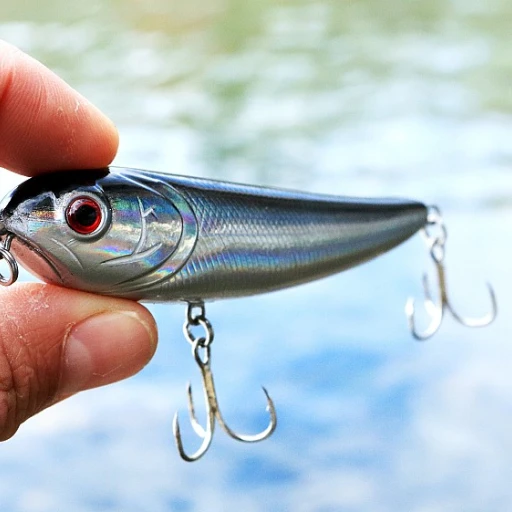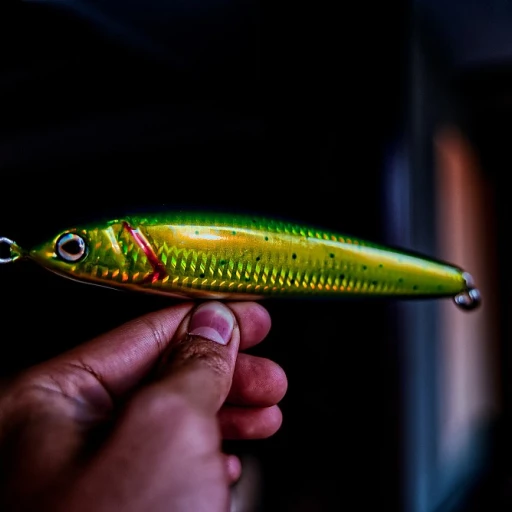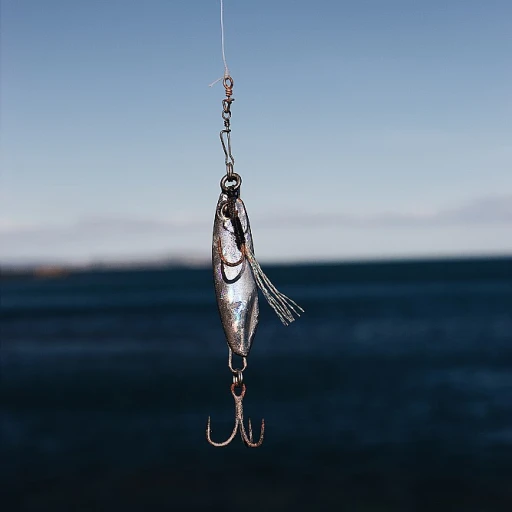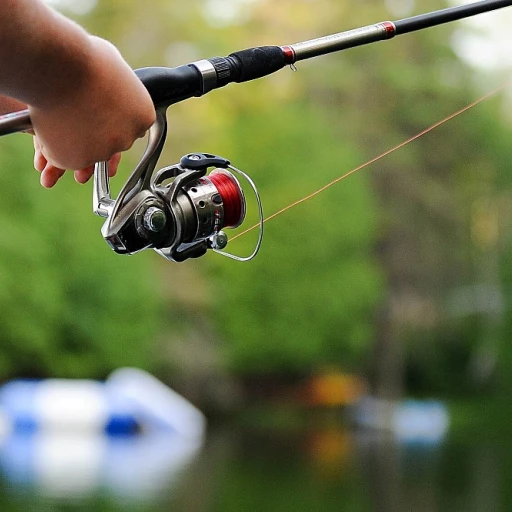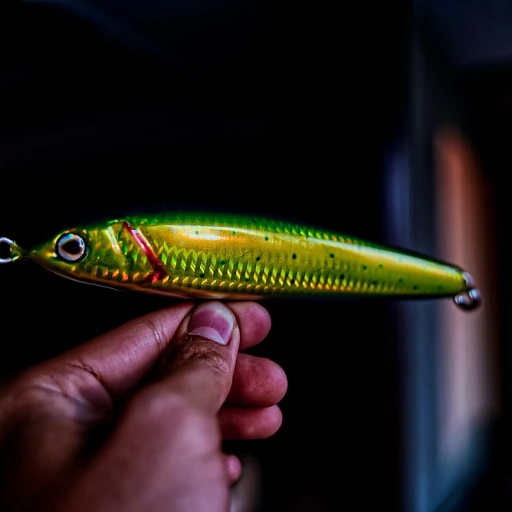
Understanding Lake Trout Behavior
Decoding Their Habits and Habitats
Gaining a solid grasp of lake trout behavior significantly enhances your success in jigging. Lake trout are known to inhabit deep waters, preferring cooler temperatures. However, their behavior can shift based on the season and the availability of prey. Understanding seasonal changes helps in predicting where they might be in the water column.
During the warm summer months, lake trout will often retreat to deeper water. However, keep an eye out for suspended fish that might be patrolling the temperature breaks or thermoclines. In colder months, particularly during ice fishing season, trout will tend to stay closer to the bottom, making vertical jigging particularly effective.
One important aspect to consider is their diet. Lake trout will often target smaller fish such as whitefish, or bottom-dwelling organisms. This predatory behavior can be replicated in your choice of jigs and bait. Opting for white tube jigs or bucktail jigs often mimics their natural prey and can lead to a good catch.
Effective jigging also depends on using the right equipment. A pound test line suitable for lakers, a sensitive rod, and the correct selection of jigs are essential. Another tip is to utilize a fish finder to locate both the depth and the presence of trout in your fishing lake.
For fishermen venturing into open water, knowing lake trout tendencies helps in choosing live bait that will appeal to these fish. Understanding how they use their environment assists in improving the efficacy of your jigging techniques. This nuanced knowledge of lake trout behavior sets the foundation for successful fishing.
To dive deeper into enhancing your fishing experience, particularly through advanced skill sets in different environments, consider choosing the right equipment for various fishing techniques.
Choosing the Right Jigging Gear
Choosing the Optimal Jigging Equipment
Selecting the appropriate jigging gear is crucial for a successful lake trout expedition. Whether you’re fishing in deep water or staying closer to the shore, understanding the nuances of your equipment can elevate your experience. Begin with a good quality jigging rod. A medium-heavy rod with a fast action tip gives you control over your jigging action, especially when targeting hefty lakers. Pair this with a reliable reel and ensure your setup can handle the pressure of deep water trout jigging. Jigs themselves come in various forms, and the right choice can make a significant difference. White tube jigs are particularly revered for their effectiveness. Their silhouette mimics small prey fish and their action is enticing to curious lake trout. For added versatility, incorporate bucktail jigs which are excellent for covering various depths of the water column. Consider the use of live bait in combination with your jigs, particularly when targeting trout holding closer to the bottom. Drop shotting or vertical jigging can entice even the most elusive fish. For your line, a strong pound test is advised. A 10 to 15-pound test braided line with a fluorocarbon leader allows for deep water fishing without compromising bait presentation or risking break-offs. When it comes to colors, while white remains classic, experimenting with other natural and bright colors might attract more fish depending on water clarity and light conditions. For those passionate about further enhancing their tackle kit, integrating essential tools for tying flies can improve your custom jigs, considering that lake trout may sometimes respond better to bespoke creations. Explore more about these tools here.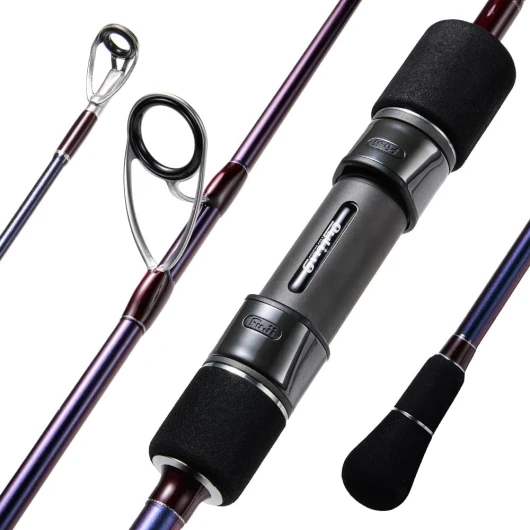
- + Lightweight design for easy handling
- + Durable Toray Carbon Fiber construction
- + Fuji Guides for smooth line passage
- + Compatible with spinning/casting reels
- + Split Rear High EVA Handle for comfort
Techniques for Effective Jigging
Mastering Vertical Jigging Techniques
When it comes to jigging for lake trout, mastering vertical jigging techniques is key to successfully reaching deep water fish. The technique involves dropping your jig straight to the bottom and then using a combination of rod movements and reeling to bring the lure up through the water column. This approach is particularly effective for catching lakers that are positioned deep, typically in colder months.
Timing and rhythm are essential. Start by lowering your tube jig or bucktail jig to the bottom, allowing it to make contact, then begin your ascent, jerking the rod upwards while reeling in slowly. This mimics the movement of bait, enticing trout to strike. Watch for any subtle bites as trout will often hit a jig on the fall.
Adapt Your Approach Based on Depth
Understanding the depth of the lake and the position of the fish greatly influences jigging lake trout effectively. Lake trout, often suspended at various levels depending on the season, may require adjusting your jigging strokes. In deep water, aggressive jigging is often necessary to attract the attention of these fish. Use a fish finder to pinpoint the depth of suspended fish, allowing you to adjust your approach accordingly.
Having the right equipment is crucial. A good jigging rod, equipped with a ten to twenty pound test line, will give you the sensitivity to feel bites and the strength to handle large trout. Consider using a white tube jig, as it often proves irresistible to trout in both open and ice fishing conditions.
Adapt Bait and Jigs for Best Results
While tube jigs are a staple, don't shy away from experimenting with other lures like bucktail jigs or live bait. These alternatives can sometimes prove more effective, especially in lakes where trout are accustomed to seeing the usual offerings. If jigging isn't producing, adapting your bait can present the trout with something unexpected.
For a more secure setup while awaiting your next catch, consider enhancing your fishing experience with a reliable boat trailer bow stop, providing stability and ease of use.
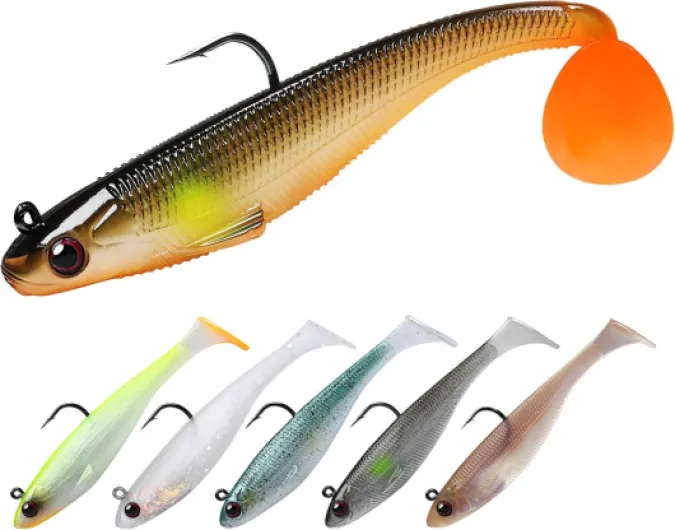
- + Unique Vibrating Swim Action increases catch rate
- + Trembly Sinking Move attracts more fish
- + Perfect for family fishing
- + Effective for various species like Bass, Trout, Crappie, Walleye
- + Lightweight at 0.45oz for easy handling
Seasonal Considerations for Jigging
Capitalizing on the Changing Seasons
Mastering the art of jigging for lake trout involves understanding how their behavior shifts with the changing seasons. Each season presents a unique set of challenges and opportunities that, when leveraged correctly, can greatly enhance your chances of success. In spring, as the ice retreats and the water begins to warm, lake trout often move to shallower areas. These shallow waters provide an excellent opportunity to employ vertical jigging techniques. Utilizing white tube jigs can be particularly effective, mimicking the bait that trout are actively pursuing in this season. Be mindful to use a lighter pound test line as lakers might be more easily spooked in the clear, shallow waters of spring. As summer rolls in, and the water temperature rises, trout typically head to deeper waters to stay cool. During this period, focusing your efforts on deep water jigging can yield good results. Utilizing a heavier rod and making use of fish finders to identify suspended fish in the water column can help you locate, and subsequently catch, elusive lakers. When the fall season arrives, lake trout venture back into shallow waters for spawning. This is an opportune time to switch to tube jigs. Consider drop shots and jigging presentations that replicate the behavior of live bait fish, making your jig irresistible to the trout. The fall season is also a great time to experiment with bucktail jigs which have the potential to attract trout with their vibrant movements. Winter, on the other hand, presents a unique scenario with ice fishing taking center stage. In this colder season, jigging through the ice becomes vital. Employing a white tube jig and focusing on the lake bottom, where trout will often reside during these colder months, can be a very rewarding strategy. Having seasonal considerations in mind will give you a strategic edge in jigging lake trout, allowing you to adapt your approach as the conditions change throughout the year.Safety and Environmental Considerations
Ensuring Safety and Respecting the Ecosystem
When venturing into the world of jigging for lake trout, it’s crucial to prioritize safety and environmental responsibility. This fascinating hobby can bring immense joy, but not without its challenges both for the angler and the environment. Here are some guidelines to keep your fishing trips safe and sustainable:- Stay Aware of Weather Conditions: Before heading out to the lake, be it for open water or ice fishing, always check the weather forecast. Sudden weather changes, especially in deep water, can pose serious risks if you're not prepared. Wearing life jackets is advisable when fishing from a boat, and ensuring your ice fishing shelter is adequately secure can keep conditions safe during unexpected events.
- Handle Fish Responsibly: When aiming to catch lakers or any fish species, it’s important to handle them gently to ensure their survival if you plan to release them. Using appropriate gear, such as nets without barbs, ensures minimal harm. For example, tube jigs often have barbless options which are beneficial for catch-and-release.
- Be Conscious of the Environment: While fishing lakes, it’s important to protect the aquatic environment. Avoid using live bait that could disrupt the local ecosystem. Opt for environmentally friendly jigs, like bucktail jigs, which are effective and do not introduce harmful elements into the water.
- Mind the Regulations: Different lakes might have distinct fishing regulations concerning jigging, trout limits, and specific times when fishing certain areas is allowed. Always check for local regulations to avoid unintentional rule-breaking. These can be found on local wildlife and fishery department websites.
- Plan for Emergencies: Whether you’re fishing shallow water or tackling the depths to target suspended fish with vertical jigging techniques, it’s wise to have a first aid kit, a reliable communication device, and knowledge of basic survival skills. This preparedness enhances your safety on the water.
Product Recommendations for Jigging Lake Trout
Essential Products to Enhance Your Jigging Experience
When targeting lake trout, having the right products in your fishing arsenal can make a world of difference. Here are some recommendations to elevate your jigging pursuits:- Jigs: Tube jigs are a favorite among anglers for lake trout. These jigs closely mimic the natural prey of lakers and work particularly well in both deep and suspended water. Choose a variety of colors, with white tube jigs being particularly effective in clear water conditions.
- Rods and Reels: Equip yourself with a sensitive rod that can handle the rigors of deep water jigging. A rod designed for vertical jigging will offer better control and feel, especially when targeting bottom-hugging fish. Pair it with a reel that has a smooth drag system, essential for controlling powerful fish.
- Line: Use a pound test that suits the lake conditions and the size of lake trout you're targeting. Whether ice fishing or in open water, a stronger line can handle the sudden drops and pulls of a fighting trout, ensuring your catch doesn’t escape.
- Fish Finders: Invest in a high-quality fish finder to locate structured areas where trout will often suspend. This can significantly boost your success by identifying the water column where fish concentrate.
- Bait: While jigging is effective on its own, complementing it with live bait like minnows can increase your chances of enticing a bite. The addition of bucktail jigs or a simple tube jig with live bait works excellently in attracting lake trout.
